Citation: Ioan Stelian Bocşan, Irina Brumboiu, Tudor Călinici, Mariana Vlad, Cecilia Roman, Ioana Brie, Mihaela Lucia Ponta. G.I.S. Surveillance of Chronic Non-occupational Exposure to Heavy Metals as Oncogenic Risk[J]. AIMS Public Health, 2016, 3(1): 54-64. doi: 10.3934/publichealth.2016.1.54
| [1] | Jessica Miller Clouser, John C. Flunker, Jennifer E. Swanberg, Gail Betz, Surjeet Baidwan, J. Kathleen Tracy . Occupational exposures and associated risk factors among U.S. casino workers: a narrative review. AIMS Public Health, 2018, 5(4): 378-393. doi: 10.3934/publichealth.2018.4.378 |
| [2] | Fawaz Dabea Alshammari, Hussain Gadelkarim Ahmed, Dena Alshammari, Ahmed Mulfy Alharbi, Atif Saud Alsaedi, Abdulbaset Elasbaly . Population insight of the relationship between lifestyle and cancer: A population-based survey. AIMS Public Health, 2019, 6(1): 34-48. doi: 10.3934/publichealth.2019.1.34 |
| [3] | Yelena Ogneva-Himmelberger, Tyler Dahlberg, Kristen Kelly, Tiffany A. Moore Simas . Using Geographic Information Science to Explore Associations between Air Pollution, Environmental Amenities, and Preterm Births. AIMS Public Health, 2015, 2(3): 469-486. doi: 10.3934/publichealth.2015.3.469 |
| [4] | Maria C D’Ovidio, Annarita Wirz, Danila Zennaro, Stefania Massari, Paola Melis, Vittoria M Peri, Chiara Rafaiani, Maria C Riviello, Adriano Mari . Biological occupational allergy: Protein microarray for the study of laboratory animal allergy (LAA). AIMS Public Health, 2018, 5(4): 352-365. doi: 10.3934/publichealth.2018.4.352 |
| [5] | Mohammad Javad Zare Sakhvidi, Ziba Loukzadeh, Hamid Dehghan Tezerjani . Occupational hand dermatitis in car repair workers. AIMS Public Health, 2019, 6(4): 577-586. doi: 10.3934/publichealth.2019.4.577 |
| [6] | Stefano Campostrini, David McQueen, Anne Taylor, Alison Daly . World Alliance for Risk Factor Surveillance White Paper on Surveillance and Health Promotion. AIMS Public Health, 2015, 2(1): 10-26. doi: 10.3934/publichealth.2015.1.10 |
| [7] | Rosemary Mamka Anyona, Maximilian de Courten . An Analysis of the Policy Environment Surrounding Noncommunicable Diseases Risk Factor Surveillance in Kenya. AIMS Public Health, 2014, 1(4): 256-274. doi: 10.3934/publichealth.2014.4.256 |
| [8] | Leonel J.R. Nunes, António Curado . Indoor radon exposure in Africa: A critical review on the current research stage and knowledge gaps. AIMS Public Health, 2025, 12(2): 329-359. doi: 10.3934/publichealth.2025020 |
| [9] | Germán Sánchez-Díaz, Greta Arias-Merino, Elisa Gallego, Rodrigo Sarmiento-Suárez, Verónica Alonso-Ferreira . Silicosis mortality in Spain (1999–2020): A temporal and geographical approach. AIMS Public Health, 2024, 11(3): 715-728. doi: 10.3934/publichealth.2024036 |
| [10] | Wagih Mohamed Salama, Hazem Ahmed Khairy, Mohammad Gouda, Marwa Samir Sorour . Organizational cynicism and its relation to nurses' occupational burnout: Testing nurse managers' paradoxical leadership moderation effects. AIMS Public Health, 2025, 12(2): 275-289. doi: 10.3934/publichealth.2025017 |
Abbreviations: Cr = chrome; Ni = nickel; Cu = copper; Zn = zinc; Cd = cadmium; Pb = lead; As = arsenic; GIS = Geographic Information Sy stem
It is more than a decade since the search for correlations between chronic, non-occupational exposure of human populations to certain heavy metals, the health status (morbidity) experienced by these populations, and their risk of development of cancer became one of the EU`s priorities in the context of the European Environment and Health Action Plan 2004-2010 (EHAP) Programme [1].
Despite the fact that the aetiology of cancer is multifactorial, the known potential oncogenic effects of some heavy metals—among many other harmful effects—in subjects who are occupationally and non-occupationally exposed to such heavy metals, has been well demonstrated [2,3,4,5,6,7,8,9].
There are many relevant studies of the potential carcinogenic roles some heavy metals could play, particularly in occupationally exposed people. The role of chronic exposure to heavy metals in non-occupationally exposed populations is less clear. This paper presents some outcomes of a three-year study of this topic, in two counties in North-Western Romania, on randomly selected representative samples of exposed and non-exposed subjects from within the general population. The level of heavy metals in that environment were studied cross-sectionally (in soil, air, drinking water, common foods), and the results were compared with historical results from similar studies performed during the previous three decades by the same laboratories. Biological tests were performed in order to establish the impact on people`s health of environmental exposure to heavy metals. All tests were finally correlated with the health status of the populations of the two regions. The preliminary results presented in this paper show significant differences to the extent of non-occupational exposure to heavy metals of environmental origin in the two selected areas.
In the frame of the multifactorial causality of cancers, using a multidisciplinary approach through a complex epidemiological study, we investigated the potential oncogenic role of non-occupational environmental exposure to some heavy metals, in population living in areas with different prevalent environmental levels (high vs. low) of heavy metals. In other words, this study seeks to clarify the potential role of such heavy metals in the living environment in the context of non-occupational multifactorial aetiology of malignancies in areas with increased environmental levels of heavy metals.
The study was performed during the period 2006-2008 in the North-Western part of Romania, covering a geographical area containing naturally existing high levels of heavy metals (Maramures County) in its environment, to be compared with a control area having much lower naturally existing levels of heavy metals as pollution (Cluj County). The levels of heavy metal ambient pollution and their correlation with the incidence of malignancies were analysed in exposed humans living in the polluted study area (Maramures County), as compared to the results obtained in the control less polluted area (Cluj County). We analysed as the different potential biomarkers the levels of chrome (Cr), nickel (Ni), copper (Cu), zinc (Zn), cadmium (Cd), lead (Pb) and arsenic (As) in soil, drinking water, and food, as environmental elements. The results were correlated and interpreted using the GIS mapping method.
In this paper, we focused on the following objectives:
· Evaluation of exposure to selected heavy metals in urban and rural populations in designated areas;
· Evaluation of the potential use of GIS as a surveillance tool to estimate the impact of environmental factors on the health status of populations.
Levels of exposure could be calculated based on identification of the exposed populations, of the critical elements of ecosystem, and as according to the ways of identifying the means of exposure.
For data collection we used a questionnaire (which included questions on general information, personal data, data on the households of subjects, exposure, health module, biomarkers, food, and chronic conditions having impact on nutritional status). The questionnaires were completed, not by the subjects interviewed, but by specialists in our institution who had been trained to implement these questionnaires. Questionnaires were originally validated on a sample of subjects. The research and questionnaire used were approved by the Ethics Committee of the University of Medicine and Pharmacy. The questionnaires were used only for subjects who had signed an informed consent form.
The evaluation of risks of cancer incidence associated to chronic non-occupational exposure at low levels to heavy metals, individually or in combinations, involved the following objectives:
a) Establishing the history of pollution in the areas of interest.
b) Determination of the concentration of heavy metals (Pb, Cu, Cd, Zn, As, Cr) in soil, drinking water, food and biological samples obtained from the exposed subjects living in the area studied, and from the control subjects unexposed to heavy metal pollution.
c) Correlating the available epidemiological, environmental and geographical data, stored in databases.
The evaluation of the role that chronic exposure to heavy metals in food and drinking water might have had in populations exposed or unexposed to low levels of these metals, and with /without malignancies, was performed by monitoring the intake of heavy metals in food and water, as determined by laboratory analysis of local samples of food and drinking water (data to be published). All cases of malignancies reported to/by public health authorities were included, not making any specific relationship between any given heavy metal and any particular neoplasia.
The results were interpreted both epidemiologically (causal inference, statistical significance, mathematic modelling) and using the GIS approach. GIS maps were constructed for both investigated areas, combining both medical and environmental investigated parameters, allowing indirectly the surveillance of oncogenic risk in those populations.
There are naturally-occurring higher levels of the investigated microelements in the environment surrounding Baia Mare (the capital city of Maramureş County) area than can be found in Cluj County, as shown in the following GIS maps (Fig.1-7).
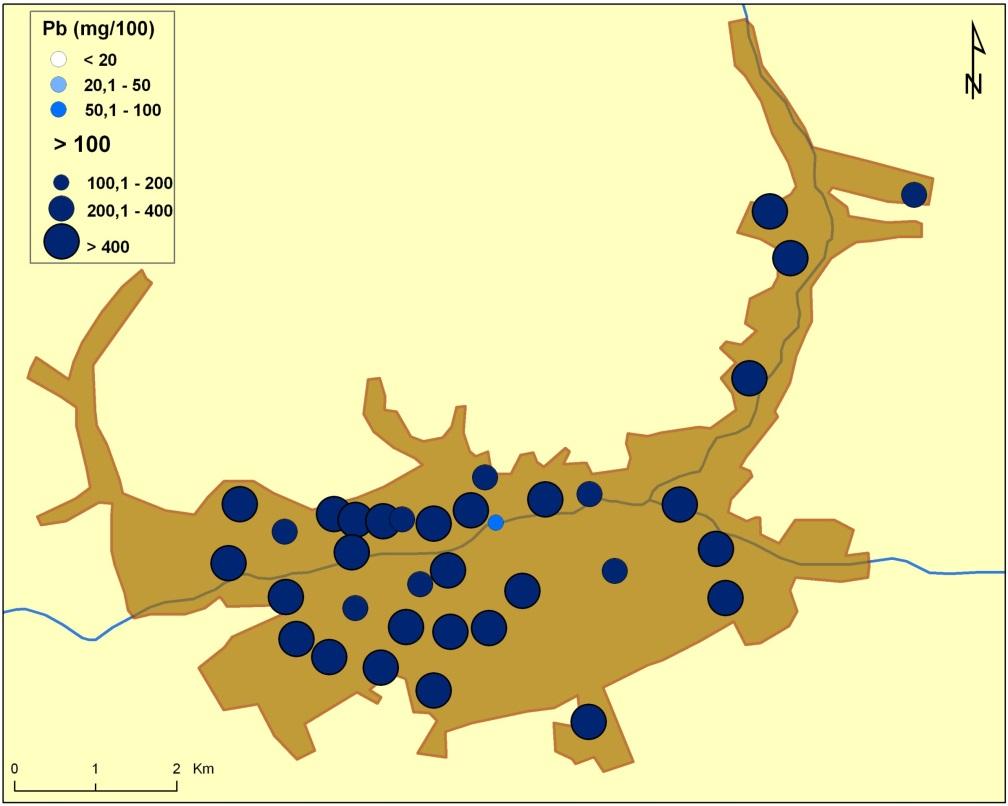 Figure 1. Lead environmental pollution in Baia Mare.
Figure 1. Lead environmental pollution in Baia Mare.
 Figure 2. Zinc environmental pollution in Baia Mare.
Figure 2. Zinc environmental pollution in Baia Mare.
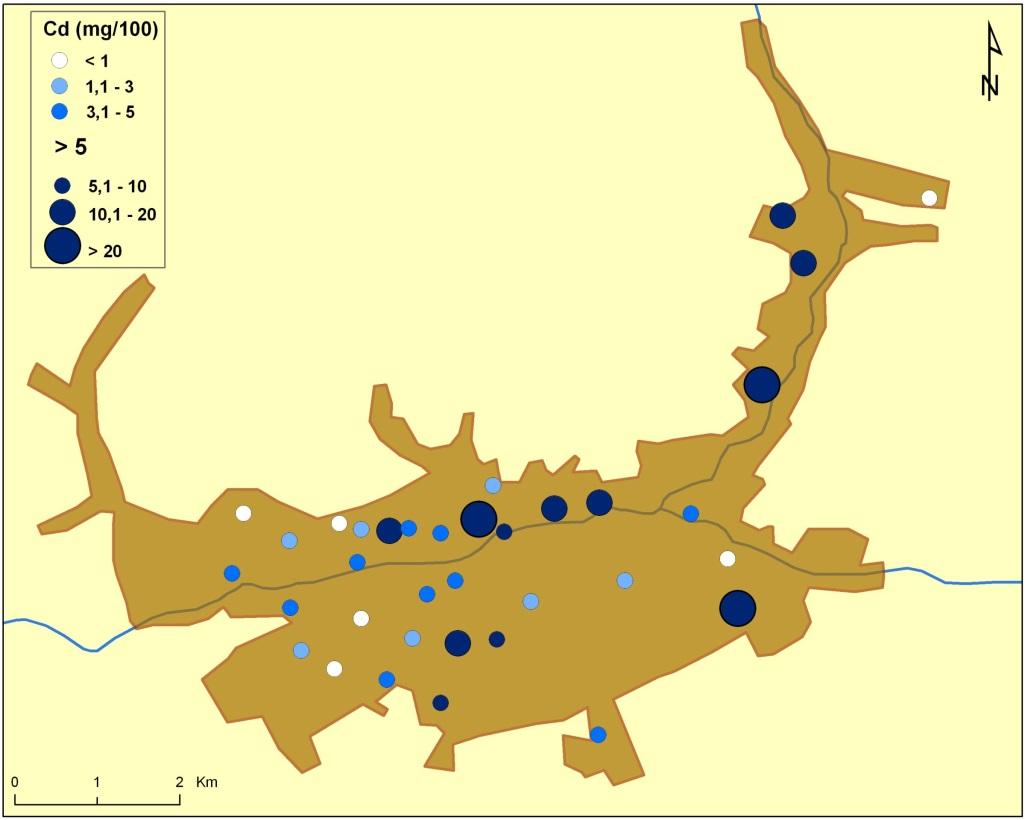 Figure 3. Cadmium environmental pollution in Baia Mare.
Figure 3. Cadmium environmental pollution in Baia Mare.
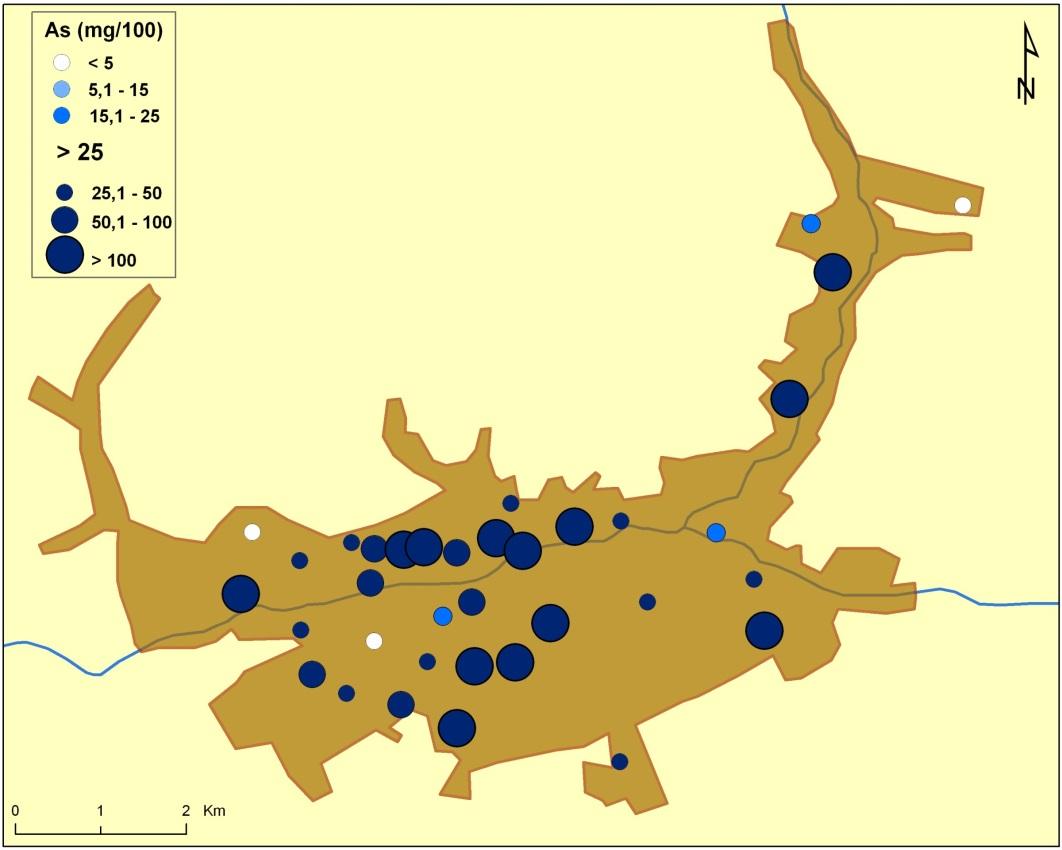 Figure 4. Arsenic environmental pollution in Baia Mare.
Figure 4. Arsenic environmental pollution in Baia Mare.
 Figure 5. Nickel environmental pollution in Baia Mare.
Figure 5. Nickel environmental pollution in Baia Mare.
 Figure 6. Chrome environmental pollution in Baia Mare.
Figure 6. Chrome environmental pollution in Baia Mare.
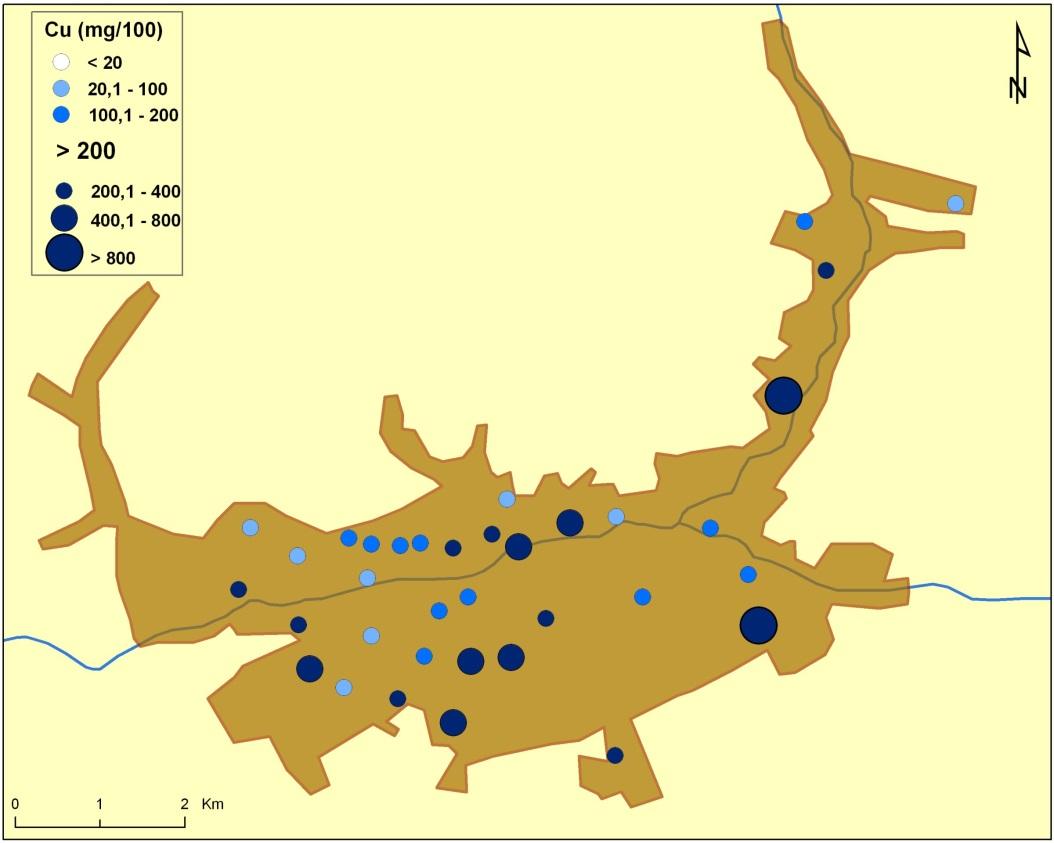 Figure 7. Copper environmental pollution in Baia Mare.
Figure 7. Copper environmental pollution in Baia Mare.
The prevalence of cancers in the inhabitants of the two areas is higher in the heavier polluted area (Maramureş county) (Fig.8, 9, 10).
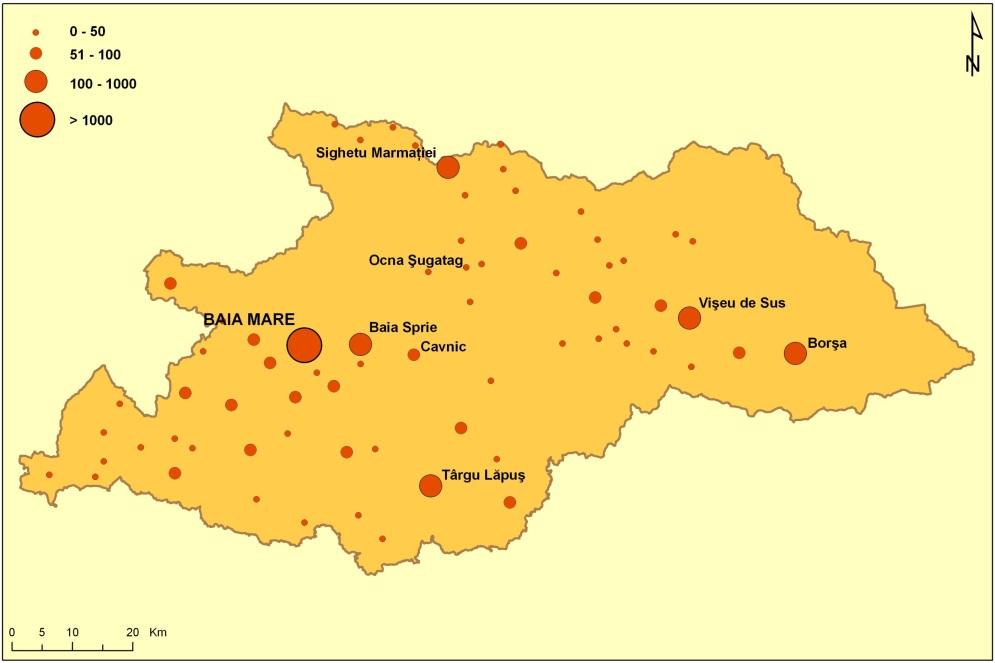 Figure 8. Cancer prevalence in Maramures County.
Figure 8. Cancer prevalence in Maramures County.
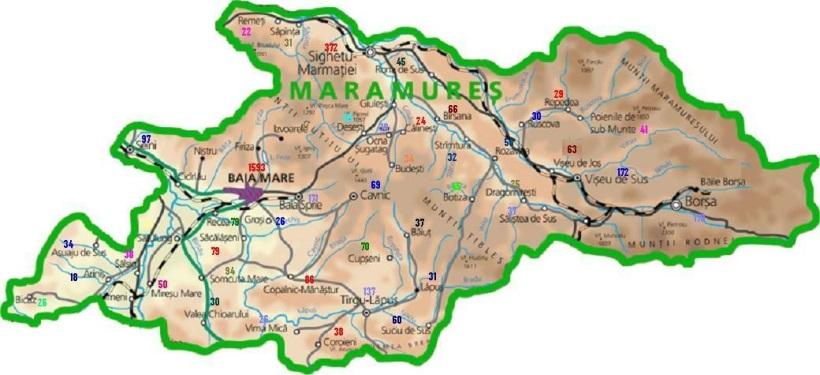 Figure 9. Cancer prevalence in Maramures County.
Figure 9. Cancer prevalence in Maramures County.
 Figure 10. Cancer prevalence in Cluj County.
Figure 10. Cancer prevalence in Cluj County.
The χ2 test proved (p < 0.05) that exposure to heavy metals is associated with a significantly increased risk of cancer in exposed populations, both in urban and rural areas.
The RISCANSIM software that has been created (by TC) allows the user to create personal scenarios of heavy metals exposure. The user has the possibility to set the concentration of different heavy metals, and the application can estimate the prevalence of cancers and of the genetic disorders for the given scenario.
The oncogenic effects of environmental non-occupational exposure to heavy metals in human populations are well-known and accepted [9,10]. To our knowledge, this is the first and only study investigating the role of environmental non-occupational exposure to heavy metals in oncogenesis in exposed human populations in North-Western Romania.
The major objectives to be considered when evaluating the exposure to in-taking pollutants were:
a) the source of investigated chemical agent;
b) means of exposure;
c) measuring / estimating concentrations and duration of exposure;
d) defining the exposed population;
e) the integral analysis of exposure.
The existing industrial sources of pollution (in Maramures County) have a certain influence on the depreciation of the quality of the environment (soil included). The appropriate and accurate evaluation of this phenomenon could be made only if the natural background geochemical composition of the soil in the area is known. The concentrations of available metals in soil constitute mainly the toxic fraction (having influence on plants and underground waters). The maximal values accepted for heavy metals in soil refer exclusively to total concentrations and vary from country to country.
We did not intend to assess individually the relationship of each heavy metal with cancer incidence, on account of the simultaneous presence and effects of other non-occupational exposures which the general population experiences in each area. The relationship between the levels of environmental pollution and oncogenic risks of exposed populations are well known, even if some opinions are divergent [11,12,13]. Such relationships could be monitored and evaluated using modern techniques such as GIS and computer assisted simulation; if the surveillance of both environment and health is of appropriately high quality, GIS mapping is a powerful tool in identifying the possible sources of pollutants [14,15,16,17,18].
Despite the multifactorial etiological factors influencing the incidence of oncological conditions, the role of heavy metals in the non-occupational environment aspects of our daily lives appears to be important but - unfortunately - is insufficiently studied and understood.
Chronic exposure to some heavy metals is one of the relevant oncogenic risk factors in exposed populations.
Statistical significant associations between environmental exposure to selected heavy metals and incidence of neoplasia in exposed populations has been clearly demonstrated, and could be represented on maps using GIS systems.
The environmental surveillance of heavy metals pollution using GIS could be an important element in the surveillance, early detection, and control of neoplastic risks in populations, including when applied more generally than when applied only in one locality.
A high priority must be a determination to enlarge the spectrum of health-related variables to be used as indicators for environmental factors (air, drinking water, soil).
New regulations would have to include maximal admitted values for the concentration of available metals in soil that represent the potential toxic fraction for plants which might enter the food chain.
Financed by MENER - CEEX Research Project no. 693 RISCANMET.
All authors declare no conflicts of interest in this paper.
| [1] | European Environment and Health Strategies (EHAP) 2004-2010 Programme. http://ec.europa.eu/health/healthy_environments/policy/health_environment/actionplan_en.htm |
| [2] | Fasinu P, Orisakwe OE: Heavy metal pollution in sub-Saharan Africa and possible implications in cancer epidemiology. Asian Pac J Cancer Prev. 2013; 14(6):3393-402. |
| [3] | Tabrez S, Priyadarshini M, Priyamvada S, Khan MS, Na A, Zaidi SK: Gene-environment interactions in heavy metal and pesticide carcinogenesis. Mutat Res Genet Toxicol Environ Mutagen. 2014 Jan 15; 760:1-9. doi: 10.1016/j.mrgentox.2013.11.002. Epub 2013 Dec 3. |
| [4] | Åkesson A, Barregard L, Bergdahl IA, Nordberg GF, Nordberg M, Skerfving S: Non-renal effects and the risk assessment of environmental cadmium exposure. Environ Health Perspect. 2014 May; 122(5):431-8. doi: 10.1289/ehp.1307110. Epub 2014 Feb 25. |
| [5] | Adams SV, Quraishi SM, Shafer MM, Passarelli MN, Freney EP, Chlebowski RT, Luo J, Meliker JR, Mu L, Neuhouser ML, Newcomb PA: Dietary cadmium exposure and risk of breast, endometrial, and ovarian cancer in the Women's Health Initiative. Environ Health Perspect. 2014 Jun; 122(6):594-600. doi: 10.1289/ehp.1307054. Epub 2014 Mar 14. |
| [6] | Hartwig A: Cadmium and cancer. Met Ions Life Sci. 2013; 11:491-507. doi: 10.1007/978-94-007-5179-8_15. Review. |
| [7] | Nagata C, Nagao Y, Nakamura K, Wada K, Tamai Y, Tsuji M, Yamamoto S, Kashiki Y.: Cadmium exposure and the risk of breast cancer in Japanese women. Breast Cancer Res Treat. 2013 Feb; 138(1):235-9. doi: 10.1007/s10549-013-2414-4. |
| [8] | Kossowska B, Dudka I, Gancarz R, Antonowicz-Juchniewicz J.: Application of classic epidemiological studies and proteomics in research of occupational and environmental exposure to lead, cadmium and arsenic. Int J Hyg Environ Health. 2013 Jan; 216(1):1-7. doi: 10.1016/j.ijheh.2012.03.002. Epub 2012 Apr 8. Review. |
| [9] | Bacquart T, Frisbie S, Mitchell E, Grigg L, Cole C, Small C, Sarkar B: Multiple inorganic toxic substances contaminating the groundwater of Myingyan Township, Myanmar: arsenic, manganese, fluoride, iron, and uranium. Sci Total Environ. 2015 Jun 1; 517:232-45. doi: 10.1016/j.scitotenv.2015.02.038. Epub 2015 Mar 5. |
| [10] | Liu X, Song Q, Tang Y, Li W, Xu J, Wu J, Wang F, Brookes PC: Human health risk assessment of heavy metals in soil-vegetable system: a multi-medium analysis. Sci Total Environ. 2013 Oct 1; 463-464:530-40. doi: 10.1016/j.scitotenv.2013.06.064. Epub 2013 Jul 5. |
| [11] | Verougstraete V,Lison D,Hotz P: Cadmium, lung and prostate cancer: a systematic review of recent epidemiological data. J Toxicol Environ Health B Crit Rev.2003 May-Jun; 6(3):227-55. |
| [12] | Yuan X, Wang J, Shang Y, Sun B: Health risk assessment of cadmium via dietary intake by adults in China. J Sci Food Agric. 2014 Jan 30; 94(2):373-80. |
| [13] | Saleem M, Iqbal J, Shah MH: Non-carcinogenic and carcinogenic health risk assessment of selected metals in soil around a natural water reservoir, Pakistan. Ecotoxicol Environ Saf. 2014 Oct; 108:42-51. doi: 10.1016/j.ecoenv.2014.06.017. |
| [14] | Xingmei L,, Jianjun W, Jianming X, Characterizing the risk assessment of heavy metals and sampling uncertainty analysis in paddy field by geostatistics and GIS, Environmental Pollution, Volume 141, Issue 2, May 2006, Pages 257-264, (http://www.sciencedirect.com/science/article/pii/S0269749105004549) |
| [15] | Celine Siu-lan Lee, Xiangdong Li, Wenzhong Shi, Sharon Ching-nga Cheung, Iain Thornton: Metal contamination in urban, suburban, and country park soils of Hong Kong: A study based on GIS and multivariate statistics. Environmental Pollution Volume 141, Issue 2, May 2006, Pages 257–264. |
| [16] | Chaosheng Zhang: Using multivariate analyses and GIS to identify pollutants and their spatial patterns in urban soils in Galway, Ireland. Environmental Pollution Volume 142, Issue 3, August 2006, Pages 501–511. |
| [17] | A Facchinelli, E Sacchi, , L Mallen: Multivariate statistical and GIS-based approach to identify heavy metal sources in soils. Environmental Pollution Volume 114, Issue 3, October 2001, Pages 313–324. |
| [18] | Colak EH, Yomralioglu T, Nisanci R, Yildirim V, Duran C.: Geostatistical analysis of the relationship between heavy metals in drinking water and cancer incidence in residential areas in the Black Sea region of Turkey. J Environ Health. 2015 Jan-Feb; 77(6):86-93. |
| 1. | Inna Yu. Tarmaeva, Odontsetseg Brown, N. V. Efimova, EVALUATION OF ALIMENTARY RELATED RISKS ASSOCIATED WITH PECULIARITIES OF NUTRITION OF URBAN MEN IN MONGOLIA, 2018, 97, 2412-0650, 951, 10.18821/0016-9900-2018-97-10-951-956 |